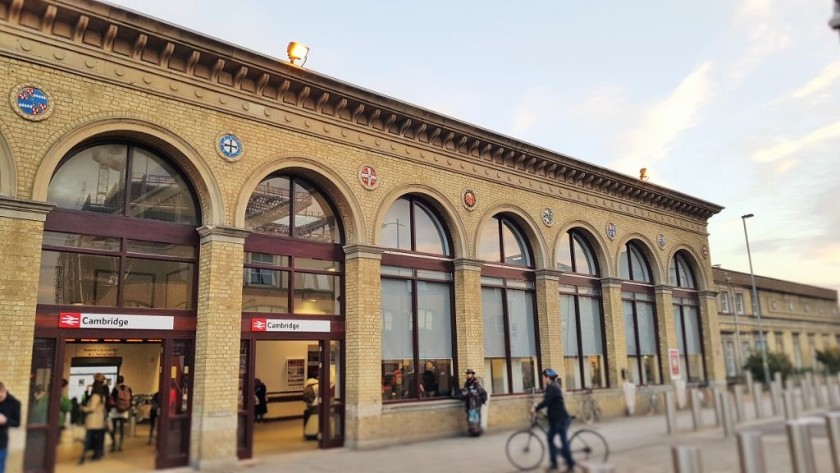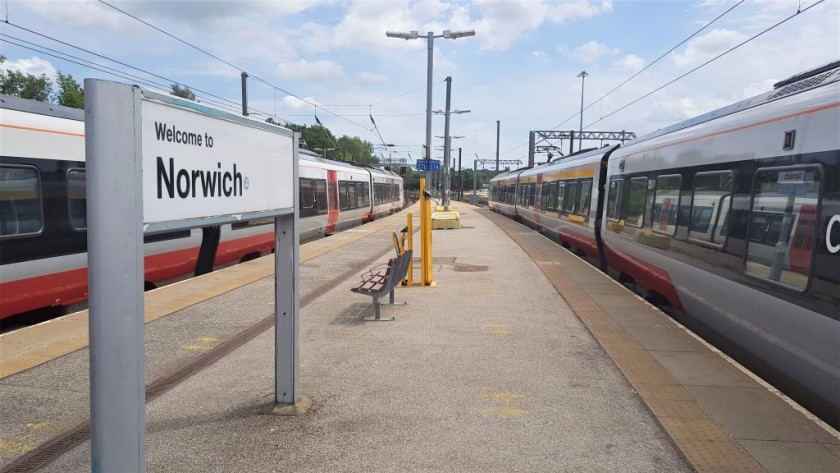Related Content
Content

London Liverpool Street (London)
Thanks to its location in the UK capital’s commercial heart, the City of London, Liverpool Street station is a particularly busy commuter hub, and with an average of more than 30 departures in every hour, it’s never quiet.
Share
At a Glance
Services
Left Luggage
Travel Information Desk
First Class Lounge
Local Tourism Information
Onward Travel
Metro
Bus Station
Taxi Rank
Accessibility
Step Free
Misc
Terminus Station
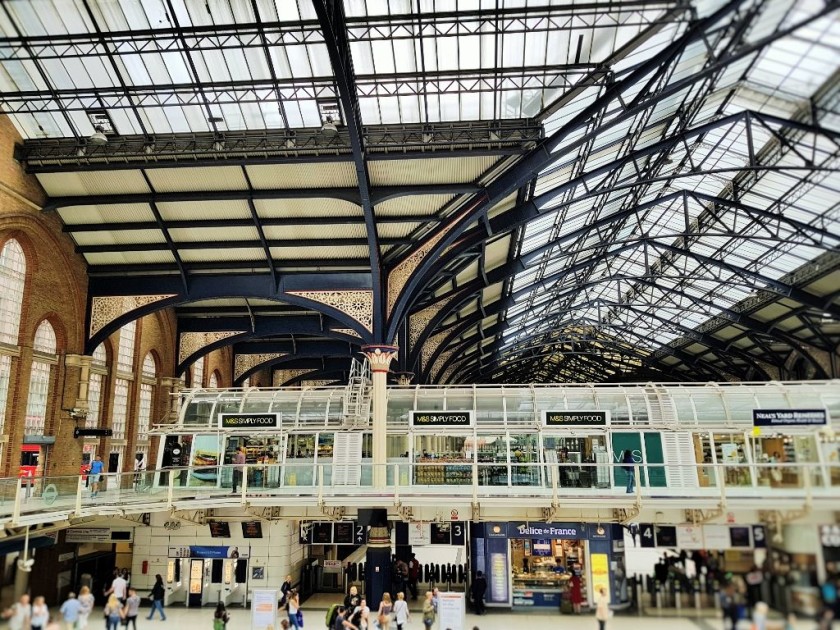

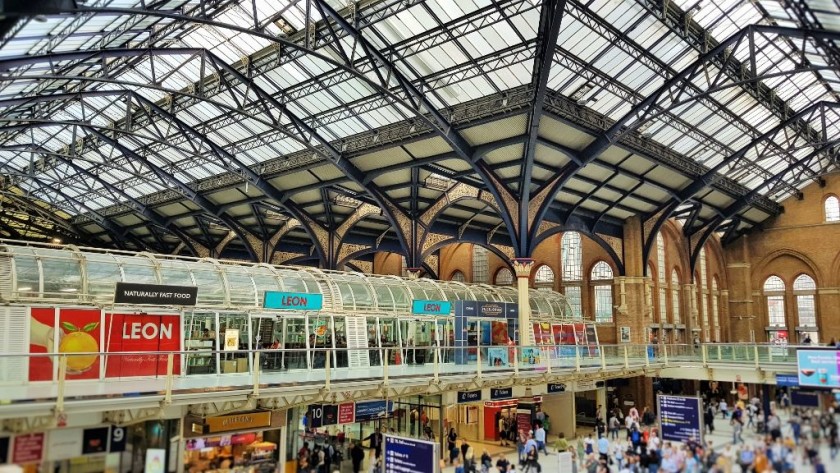
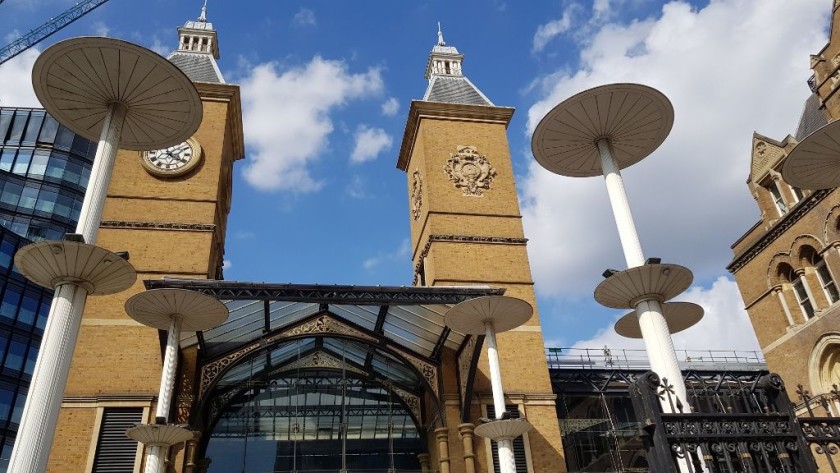
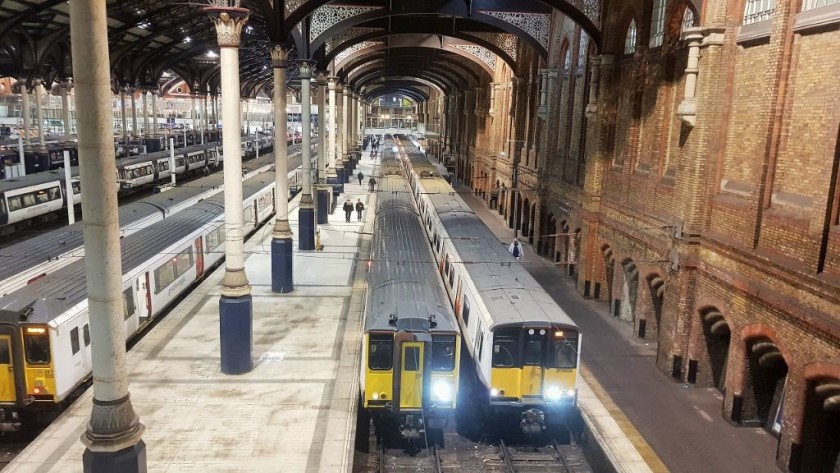

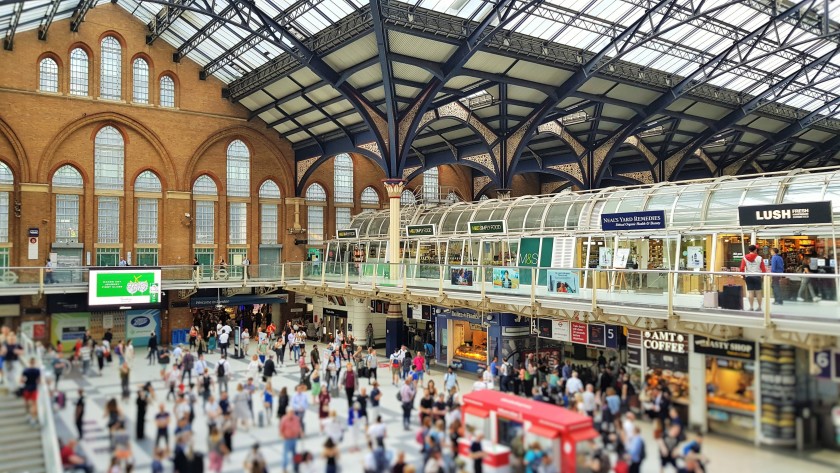
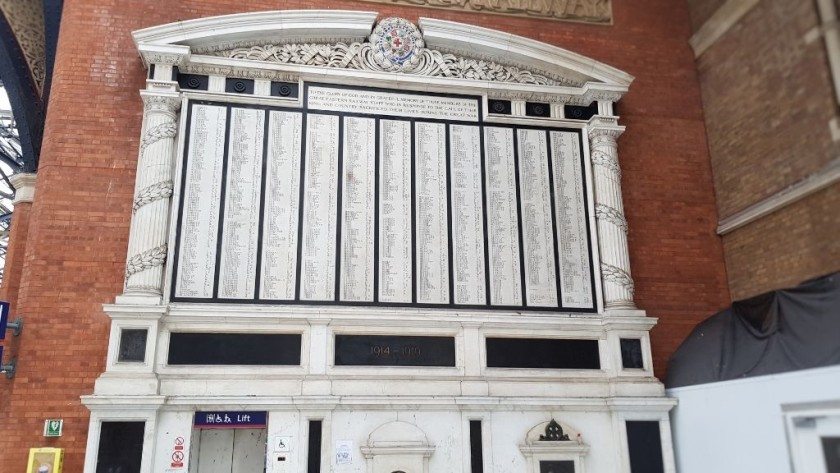
It’s likely that even the regular commuters who use Liverpool Street station probably appreciate that the pioneering renovations carried out in 1991, proved to be a text book example of how to preserve the 19th century glory of a station, while creating a space that’s infinitely more user friendly than it had ever been previously.
The stunning roof over platforms 1 - 10 dates from 1875, but platforms 11 - 18 are located in what's in effect the basement of an office block.
The concourse spans the station and provides level access to all the platforms, which the mainline trains depart from.
Though what’s unusual about Liverpool Street is that this concourse is below street level, so it is accessed by escalators and stairs.
There is a street level walkway, which both surrounds and spans the concourse and by the rear of the station building, beneath the war memorial, is a lift (elevator) which connects the entrances/exits to the concourse.
So you shouldn’t have to use the stairs and escalators to access the trains when arriving at Liverpool Street on foot, or by bus and taxi.
Departing by train:
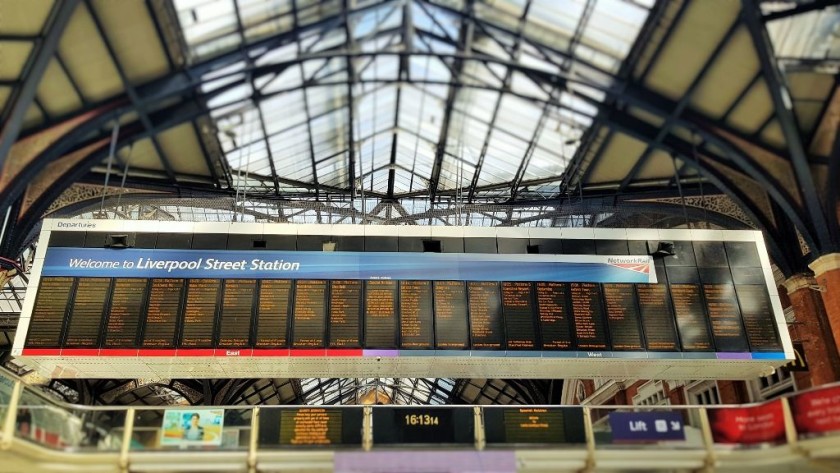
The train services tend to leave from specific sets of platforms (tracks) according to their destination – though note there can be some overlap;
Platforms 1 -5 are used by the local trains to destinations in north-east London including Hackney, Stoke Newington, Tottenham, Walthamstow and White Hart Lane
Platforms 3 – 8 is where the trains heading to Cambridge and the Stansted Express services depart from; note that there are no specific platforms (tracks) dedicated to the Stansted Express.
Platforms 8 -10 are used by the express trains to Norwich via Ipswich and Colchester
Platforms 11 – 18 is where the trains to destinations on the Essex coast including Clacton, Harwich and Southend-On-Sea depart from.
This separation of the train services according to destination is also reflected on the main departure board, which hangs down from the roof, so it in effect divides the concourse into two halves.
What won’t be obvious is that the departure board is also split in two, as you look at it the trains departing from platforms 1-10 are on one half on the board - the 'west departures'; while the trains departing from platforms 11-18 will be listed on the other half - the 'east departures'.
Though the 'Stansted Express' departures are listed in their own separate column on the far right.
The details of the trains are also listed in departure order, so that the next train to leave is constantly moving to the left, therefor working out which platform your train will be leaving from can require some patience.
Though if you are confused, the staff at the information desks on the concourse can come to the rescue; there is a dedicated desk for the Stansted Express.
You’ll have a less-stressful travel experience if you aim to at Liverpool Street, ready with ticket in hand, 10 – 15 minutes before your train will be departing.
Give yourself time to absorb the train departure information and as seat reservations aren’t available on any departure, except the trains heading to Norwich, being able to be among the first wave of travellers to board, is a big plus.
Taking the Elizabeth Line
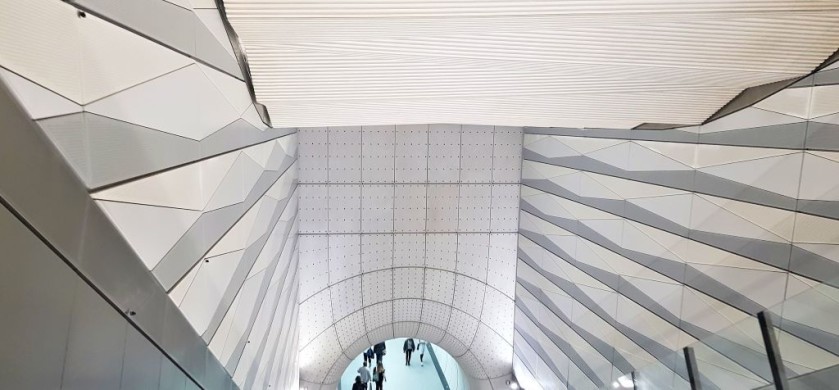
The Elizabeth Line has transformed the access between Liverpool Street to many areas of central London, providing faster access to multiple locations.
Plus the transfer between stations and street at all of the stations served by the Elizabeth Line is step-free.
From east to west, the stations served by the Elizabeth Line are:
Farringdon
Taking the Elizabeth Line between Liverpool Street and Farringdon will be around 5mins quicker than taking the Underground with improved step-free access to and from the trains at both stations.
At Farringdon an easy interchange is available between the Elizabeth Line and the Thameslink trains which are direct to St Pancras for Eurostar and the stations at Luton and Gatwick Airports; and to the likes of Brighton, Cambridge and St. Albans.
At St Pancras the Thameslink station is a 2 min flat-walk from King's Cross station.
Tottenham Court Road
The Elizabeth Line trains will be around 5 mins quicker than taking the Central Line.
Bond Street
The Elizabeth Line trains will be around 7 mins quicker than taking the Central Line.
Paddington:
Taking the Elizabeth Line to Paddington station is faster and easier than taking the Underground, the entire route is step-free thanks to the escalators and elevators at both stations.
Guides to travelling by train in London
Underground connections summary:
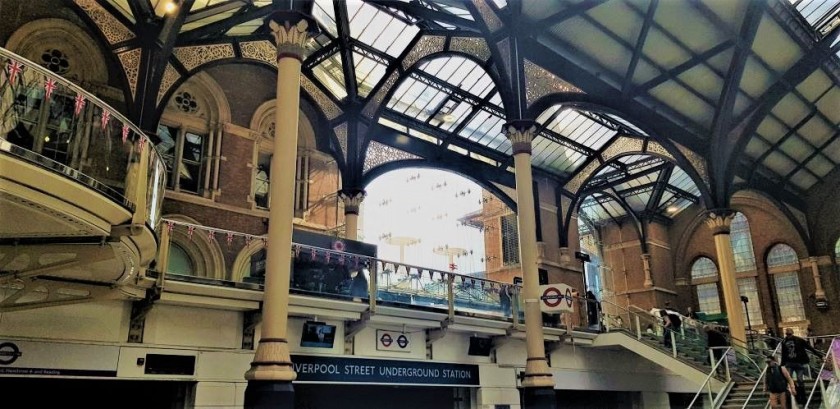
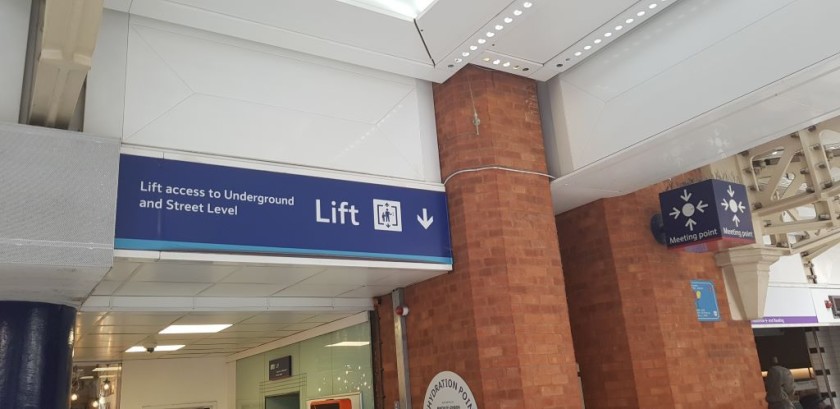
Liverpool Street is served by the Central, Circle, Hammersmith & City and Metropolitan Lines and there is an obvious entrance to the Underground station shared by all the lines as well as the Elizabeth Line, on the mainline station concourse; its opposite platforms (tracks) 3 – 6.
The primary access from the main concourse into this Underground ticket hall is by using a short flight of stairs, but an elevator is also available to the left of these stairs.
Taking the Central Line:
The Central Line connects Liverpool Street with the heart of the city and the West End, so it’s always busy.
All eastbound trains call at:
- St Pauls,
- Holborn for the British Museum and:
- Bond Street for Selfridges.
The Central line uses a distinct part of the Underground station at Liverpool Street, its platforms are deep below ground, so they can be accessed by elevator and escalator.
Taking the Circle, Hammersmith & City and Metropolitan Lines:
These three lines all share a separate part of the Underground station, which is level with the main station concourse.
As a consequence of this the eastbound platform used by all three lines has step-free access to and from the mainline station; and the Underground trains from Paddington and Baker Street and Kings Cross, St Pancras and Farringdon all arrive here.
The Circle trains heading to:
- Tower Hill for the Tower of London,
- Mansion House for Tate Modern,
- Embankment for the South Bank,
- Westminster; and
- Victoria:
- and South Kensington for the museums:
leave from this eastbound platform
Though the Circle Line trains only usually depart every 12 minutes and they can be a tad slow; they initially heading east before turning to the west.
Therefore if you don’t have heavy luggage it can be quicker to take the westbound Central Line and make connections.
In contrast to the eastbound platform, the westbound platform used by the Circle, Hammersmith & City and Metropolitan Lines can only be accessed by stairs.
Not only do the Circle, Hammersmith & City and Metropolitan Lines share platforms, the trains also look identical, so take care to check the names of the lines and the destinations, which will be on the side of the trains.
Making transfers to and from other major London stations
Liverpool Street station to London Airports
The launch of the full service on the Elizabeth line has transformed the journey by train from Liverpool Street station to Heathrow Airport.
Four Elizabeth line trains per hour now call at the station which serves Terminal Two and Three, with two trains per hour continuing on to both Terminal Four and Terminal Five; the departure stations alternate.
These Elizabeth line trains call at Farringdon station, where both lifts (elevators) and escalators are available for a step-free transfer to Thameslink trains which are direct from Farringdon to the stations which serve Gatwick Airport and [Luton Airport](https://www.london-luton.co.uk/
Journeys
# Jump to a directionDirections
Journeys from London Liverpool Street
Jump to directionsLondon to Cambridge by train
London to Norwich by train
This second version of ShowMeTheJourney is exciting and new, so we are genuinely thrilled that you are here and reading this, but we also need your help.
We’re striving not to let anything get in the way of providing the most useful service possible, hence a facility has been set up with DonorBox which can be used to support the running costs and make improvements.
Instead of advertising or paywalls, your financial support will make a positive difference to delivering an enhanced service, as there’s a lot of ideas which we want to make happen.
So if you have found the info provided here to be useful, please consider saying thank you.

This is one of more than 100 train travel guides available on ShowMeTheJourney, which will make it easier to take the train journeys you want or need to make. As always, all images were captured on trips taken by ShowMeTheJourney.






